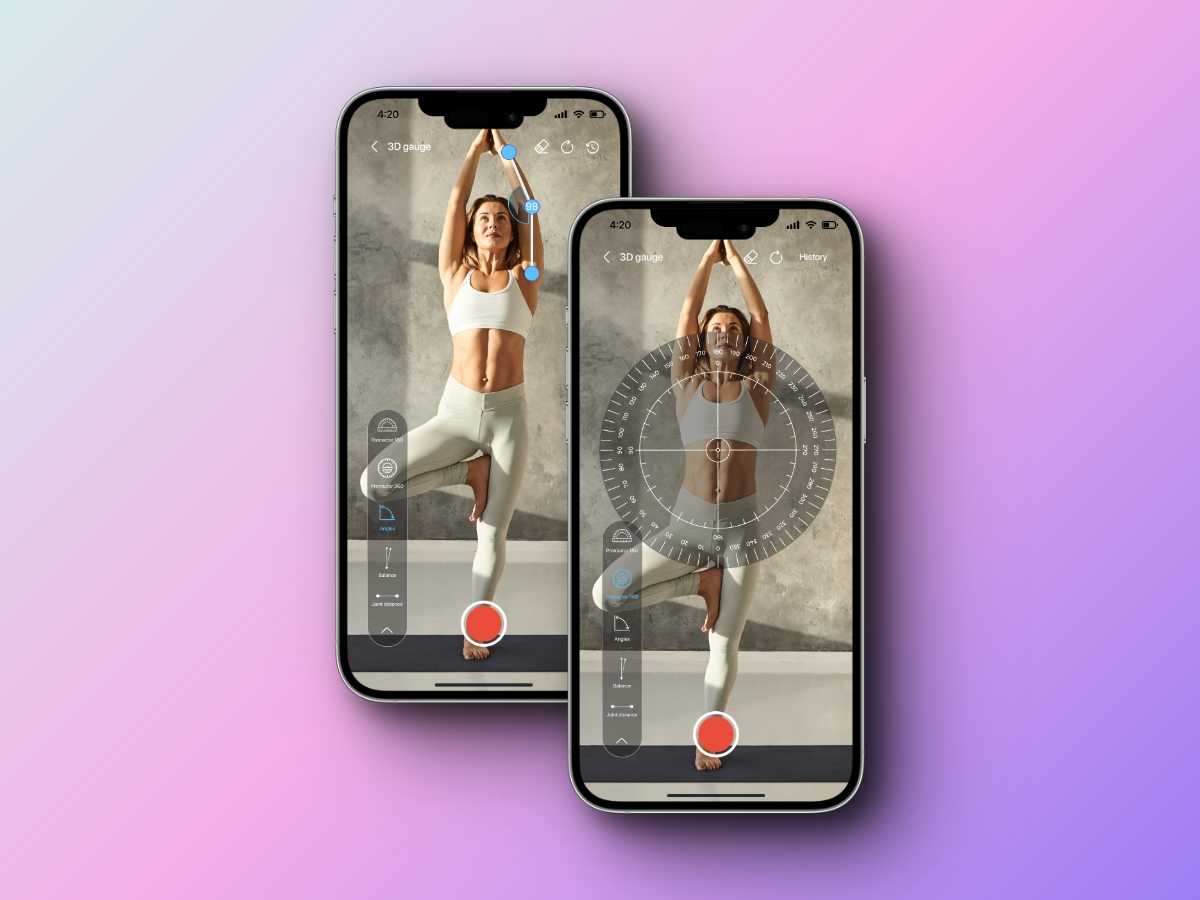
Our 3D AR Joint Distance Measurement Tool is a powerful tool that allows users to measure the
distance between any two joints on the human body in real time. The tool uses the Apple LiDAR camera
to accurately track the position of the joints, and it updates the distance measurement frame by
frame. This makes it ideal for tracking joint movement during sports activities, rehabilitation
exercises and measurement segments for biomechanics tests.To use the tool, simply select two joints on
the human body. The tool will then display the distance between the joints in centimeters. You can
also see the distance measurement in real time as you move your body.
Here are some of the benefits
of using the 3D AR Joint Distance Measurement Tool:
Accurate measurements: The tool uses the Apple
LiDAR camera to accurately track the position of the joints, providing accurate measurements in real
time.
Real-time feedback: The tool updates the distance measurement frame by frame, giving you
real-time feedback on your joint movement.
Versatile: The tool can be used for a variety of
purposes, including sports biomechanics, rehabilitation, and personal fitness.If you are looking for a
powerful and accurate tool to measure the distance between joints on the human body, then the 3D AR
Joint Distance Measurement
The 360-degree protractor is a circular measuring tool used in biomechanics to quantify joint
angles and range of motion. Users can select a single joint and the tool will provide precise angle
measurements. You can change the joint that has a protractor pin on it or change the protractor
size . Also you can add 3 protractors on different joints.
1. Joint Range of Motion:
Measure angles at joints to assess flexibility and track progress during
rehabilitation.
2. Gait Analysis: Measure joint angles during walking or running to
analyze gait patterns and identify abnormalities.
3. Posture Assessment: Use angles at joints and
body segments to evaluate postural deviations and muscle imbalances.
4. Sport
Biomechanics: Analyze sports movements by measuring angles at various joints to optimize technique
and prevent injuries.
5. Ergonomics: Assess ergonomic setups and measure joint angles during
activities to minimize strain and prevent musculoskeletal disorders
The AR 180° protractor is a measuring tool that uses augmented reality to provide precise angle
measurements in multiple planes. This makes it an invaluable tool for biomechanics, where accurate
quantification of joint angles and range of motion is essential for understanding movement,
performance, and rehabilitation.
The protractor is easy to use. Simply select the joint you want
to measure, and the tool will overlay a virtual protractor on the user's view of the body. The
user can then adjust the protractor to measure the desired angle. The measurements are displayed in
real time, and can be saved or exported for later analysis.
The AR 180-degree protractor is a
valuable tool for biomechanics researchers, clinicians, and athletic trainers. It provides accurate
and reliable angle measurements that can be used to improve our understanding of human
movement.
You can change the joint that has a protractor pin on it or change the protractor
size . Also you can add 3 protractors on different joints.
Our AR vertical line tool uses augmented reality to draw a vertical line between your ankle and
head, providing a visual representation of your spine posture. The tool can detect the placement and
curve of your spine, and provide feedback on your alignment degree. This feedback can help you to
identify areas where your posture needs improvement, and to make adjustments to improve your overall
balance and well-being.
In addition to providing feedback on your posture, the AR vertical line
tool can also be used to track your progress over time. This can help you to see how your posture is
improving, and to stay motivated to maintain good posture habits.
The AR Balance tool is a
valuable tool for anyone who wants to improve their posture and overall health. It is easy to use,
and it can provide you with the feedback you need to make positive changes.
With the 3D AR Angle tool users can choose three points, including the desired joint and then a visual 3D representation of the calculated angle is provided. The calculation of joint angles can be used as a biomechanical measurement tool